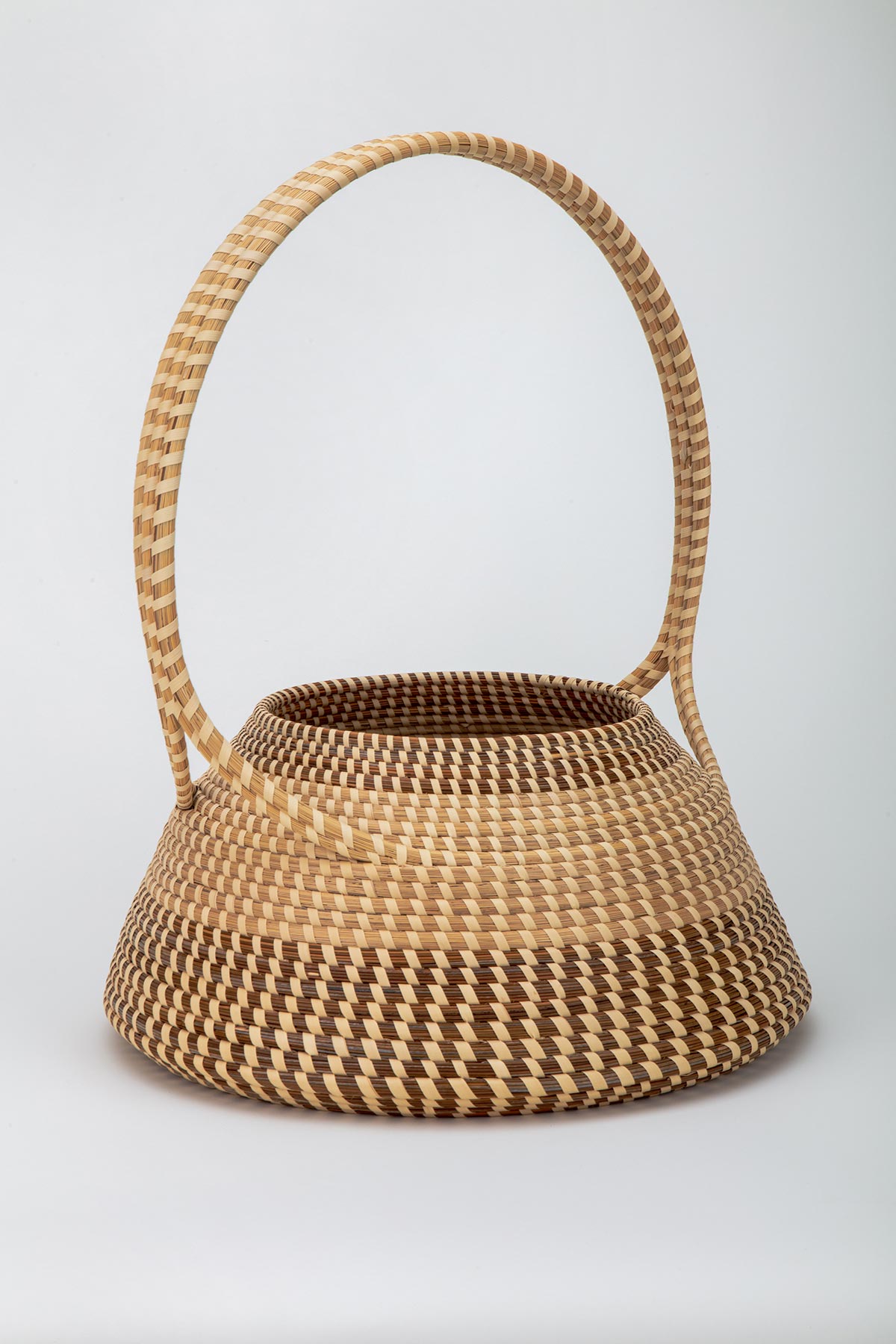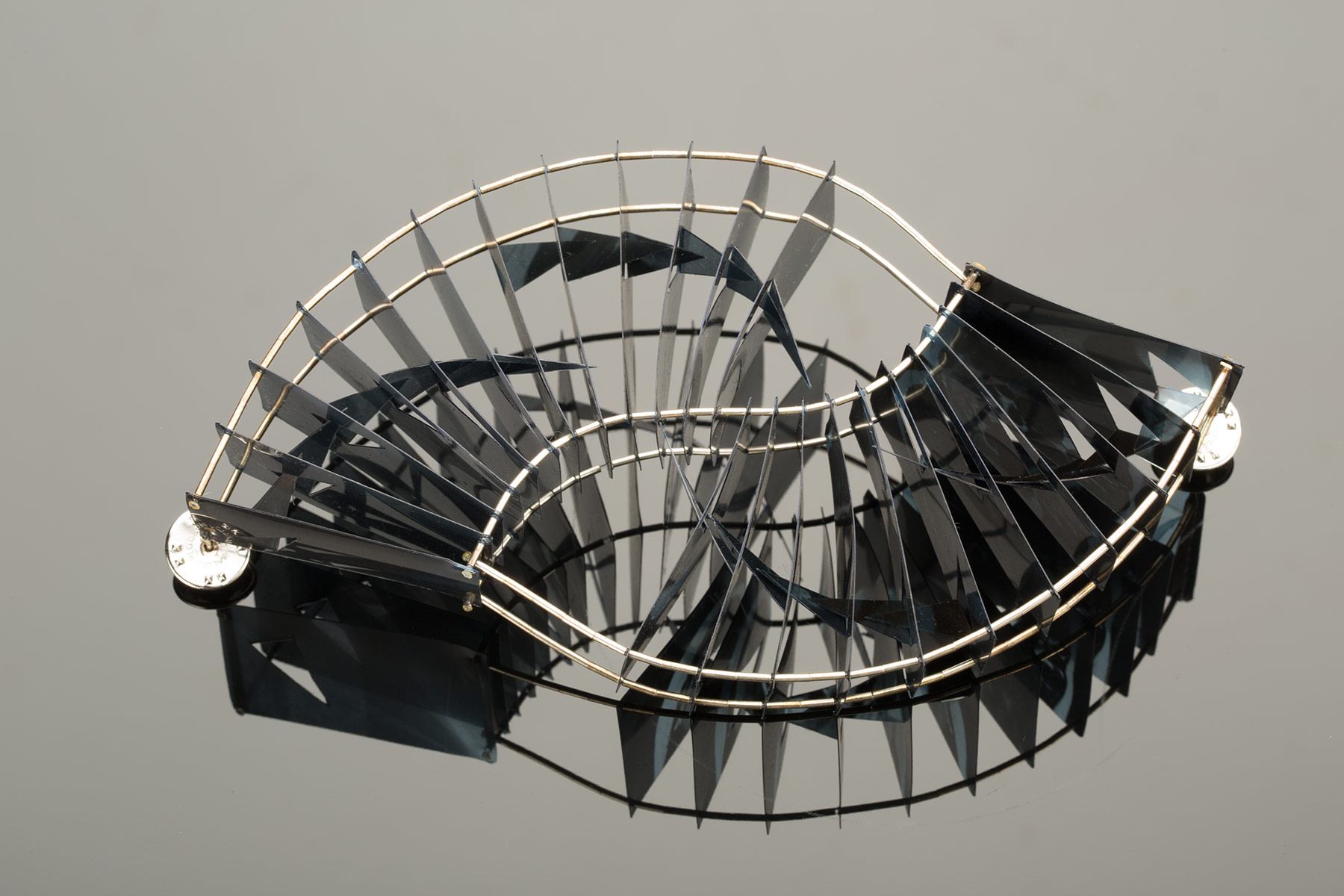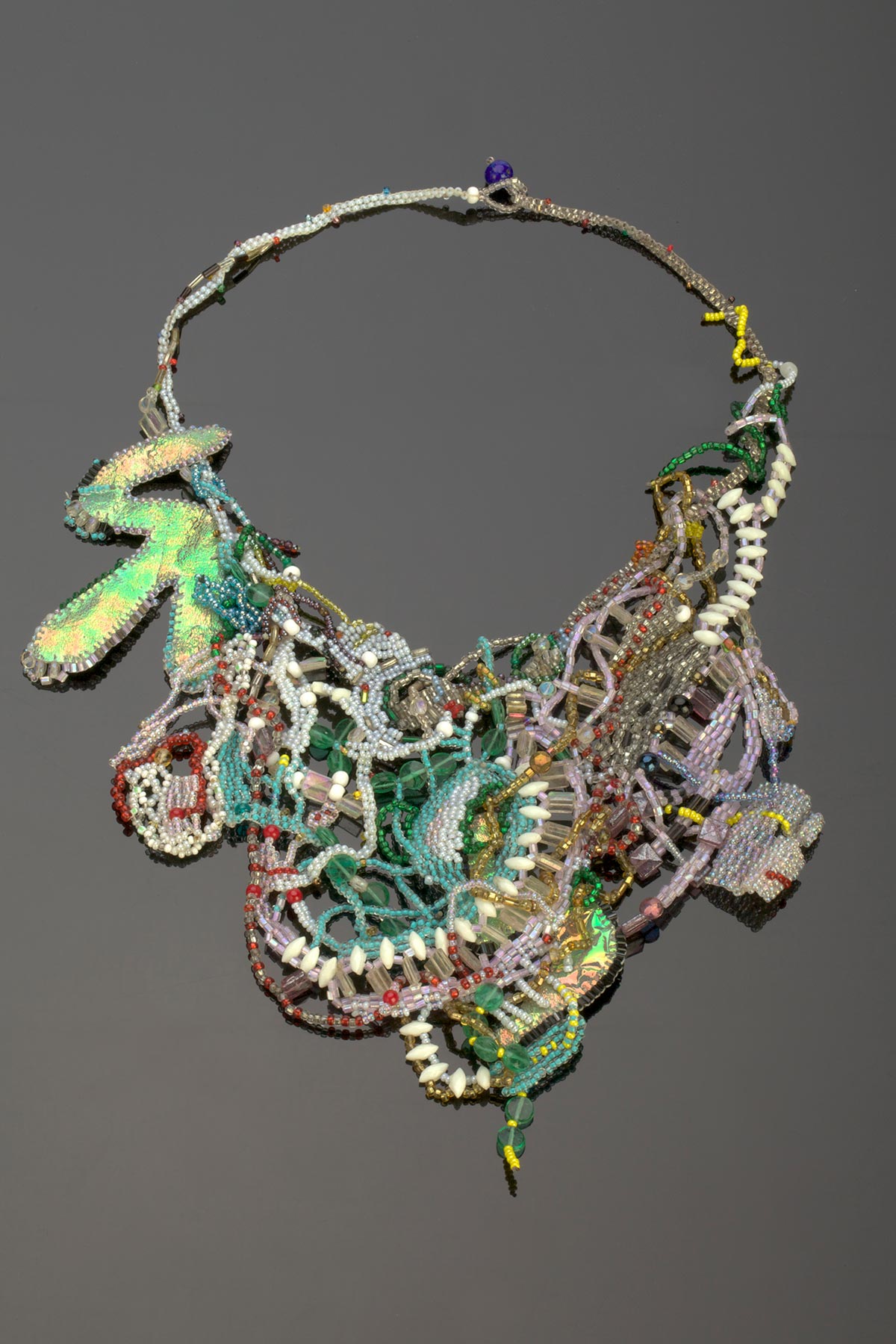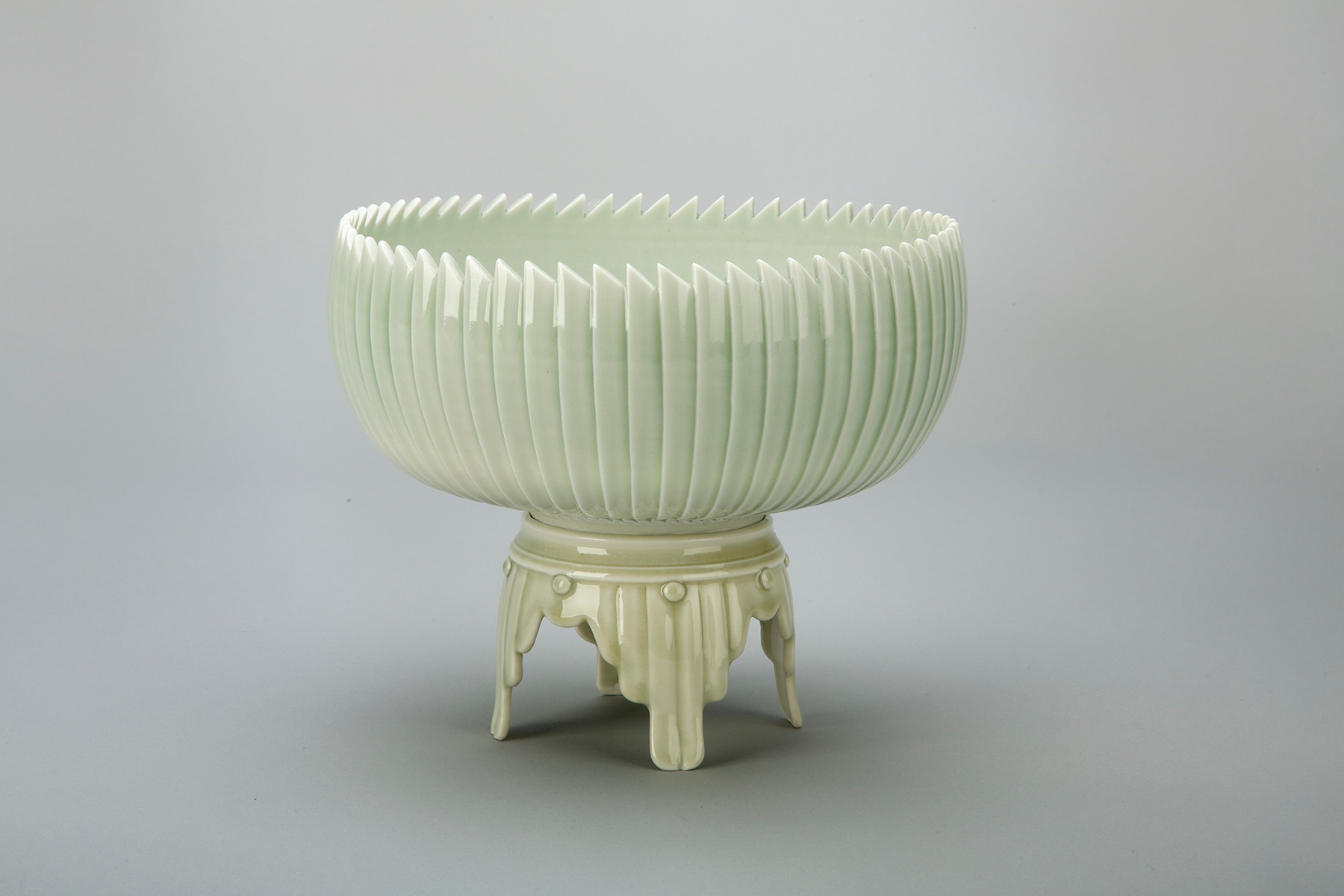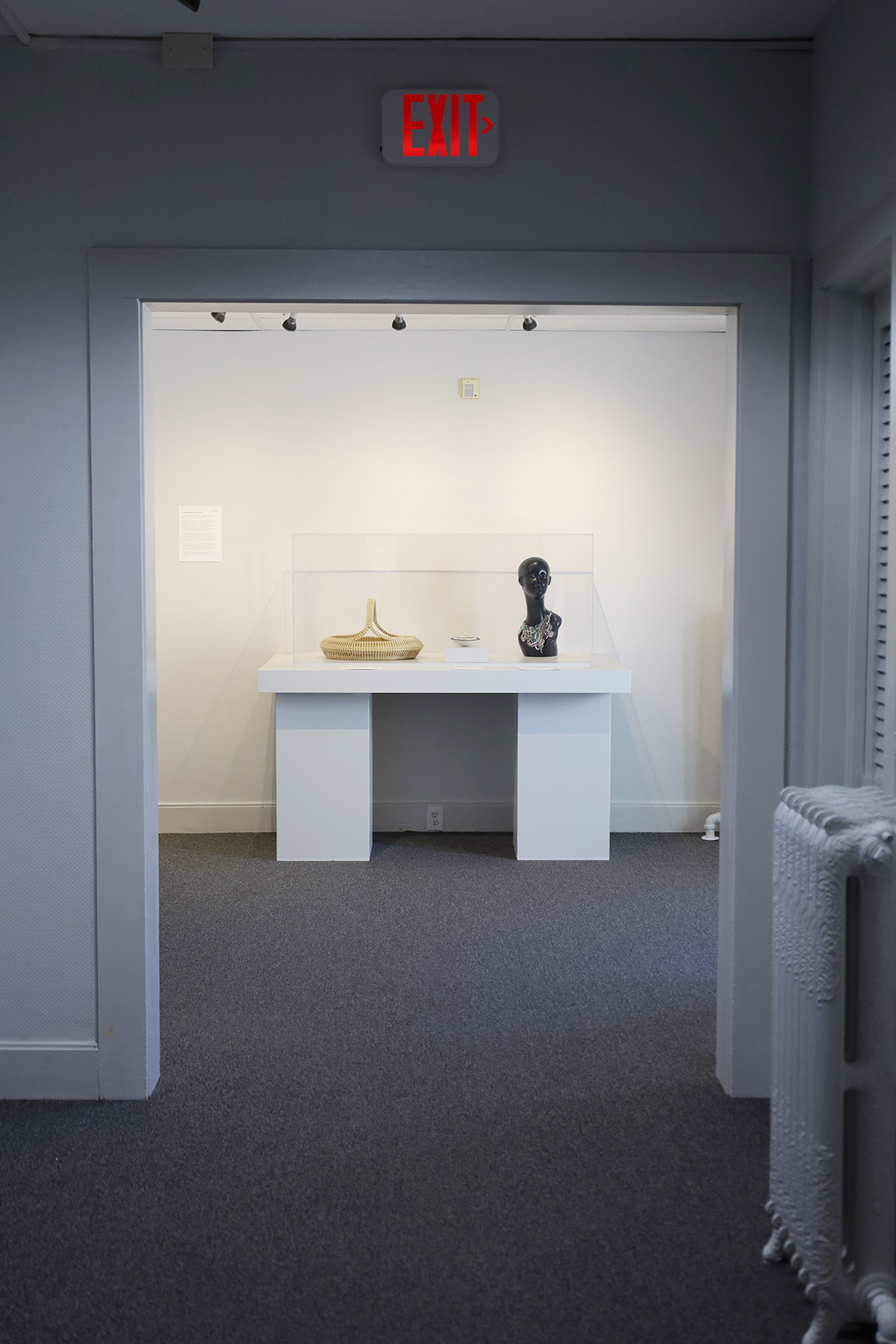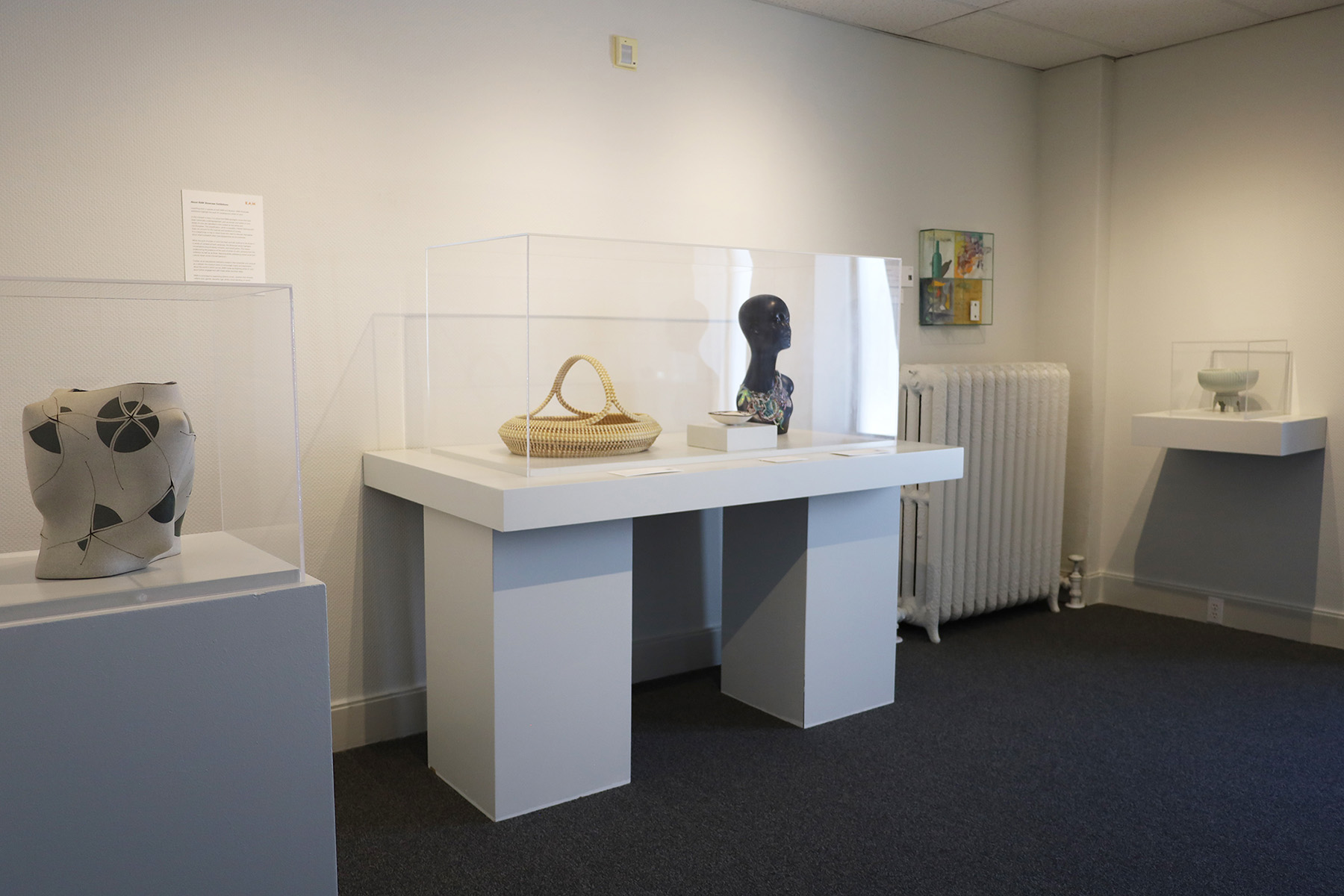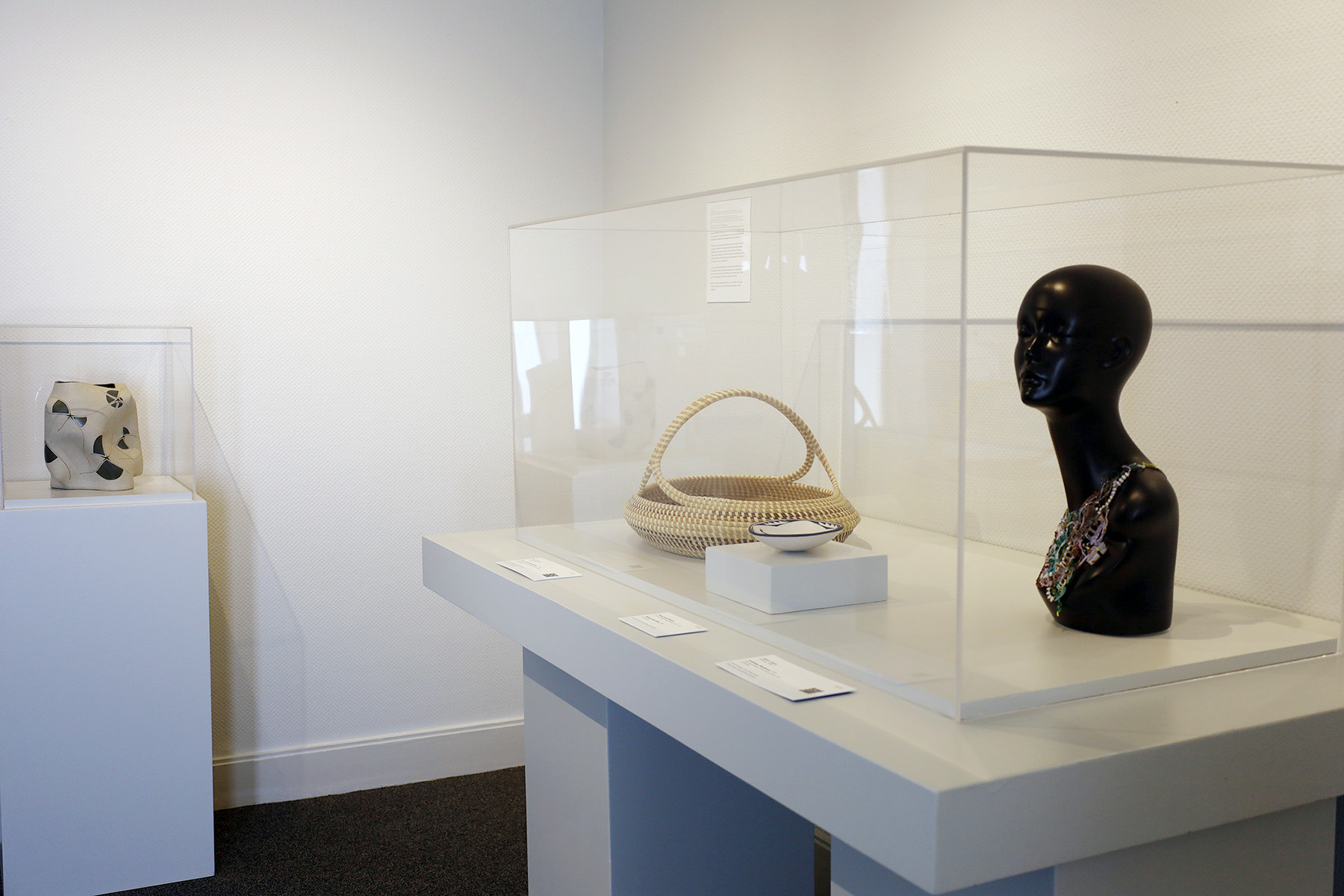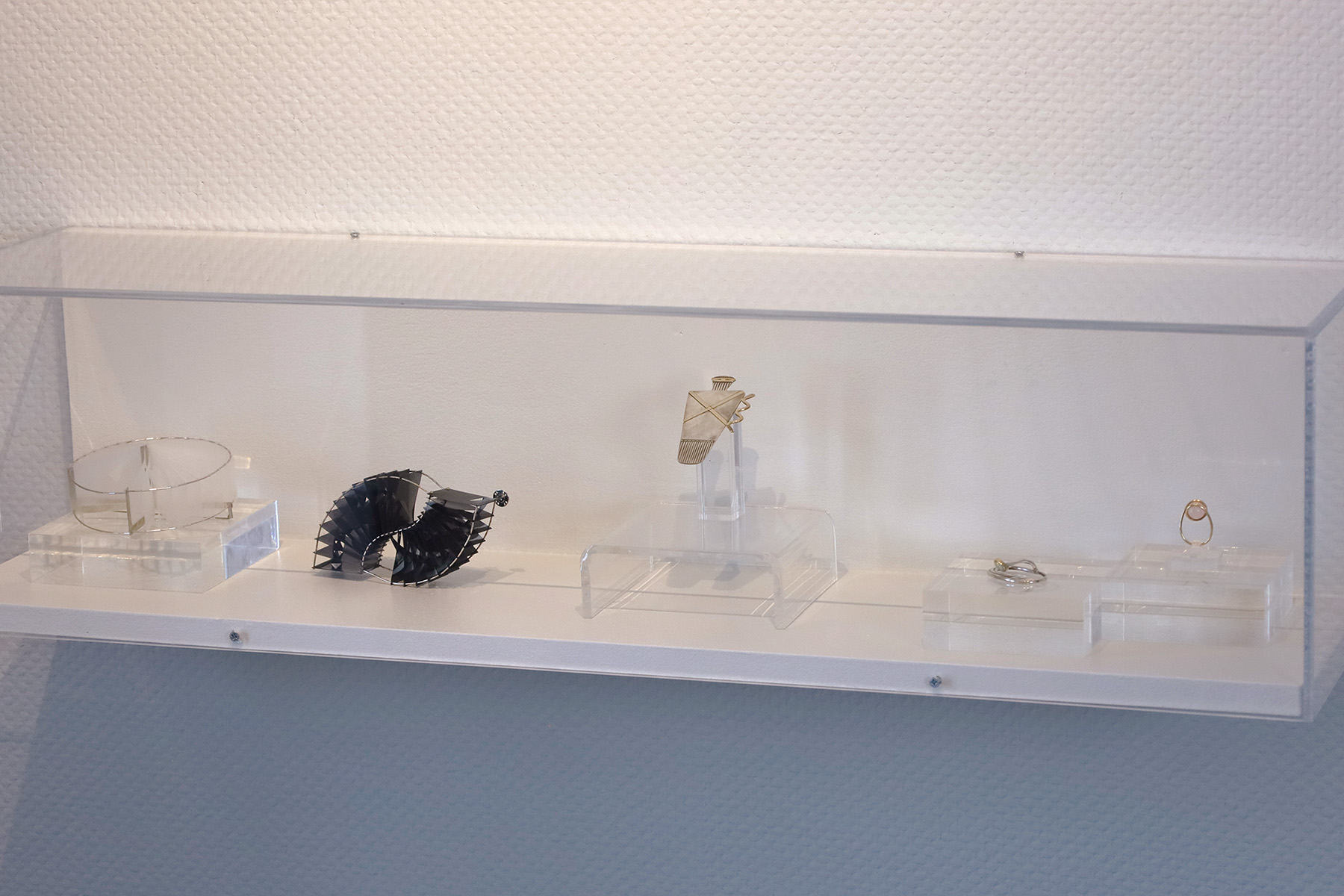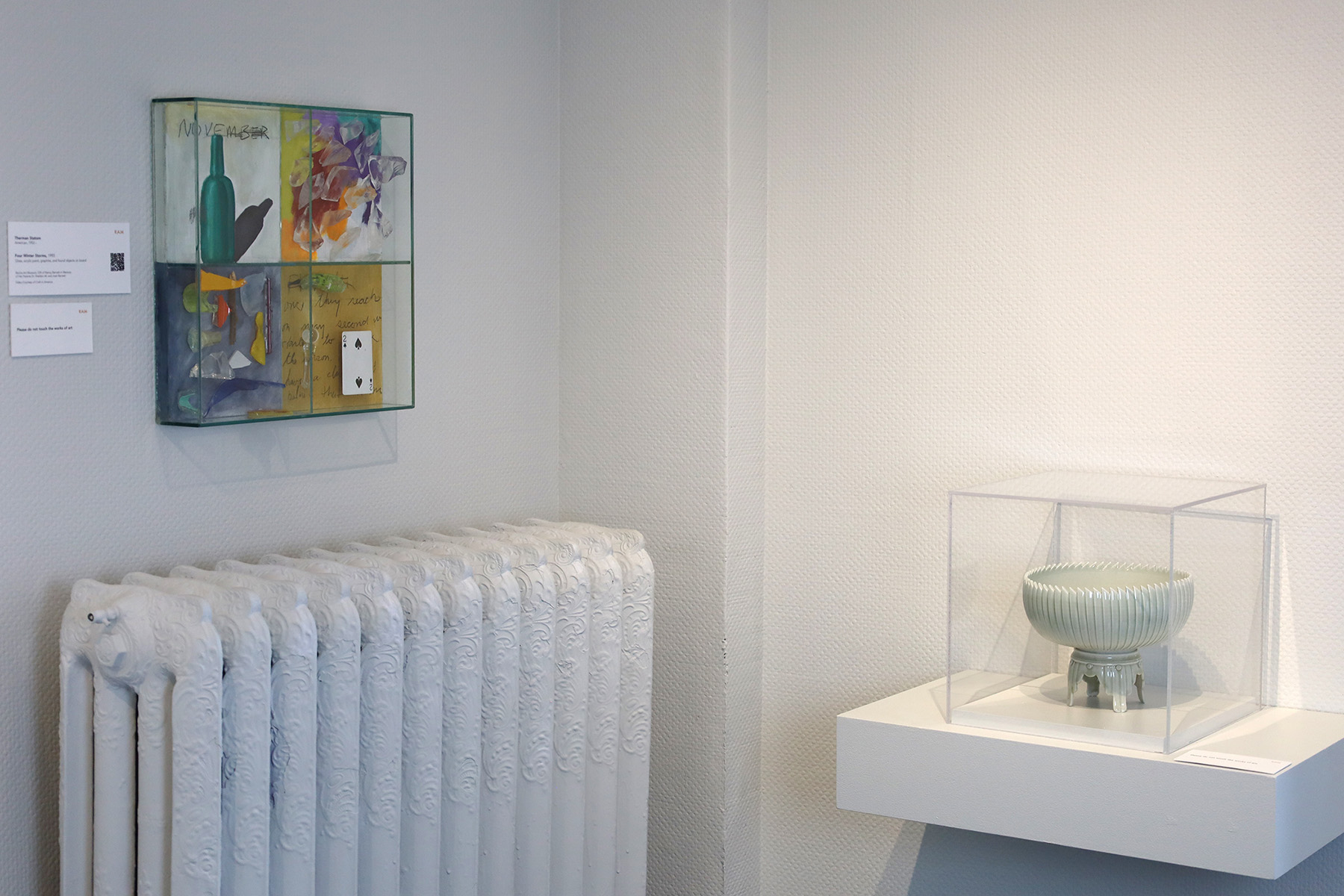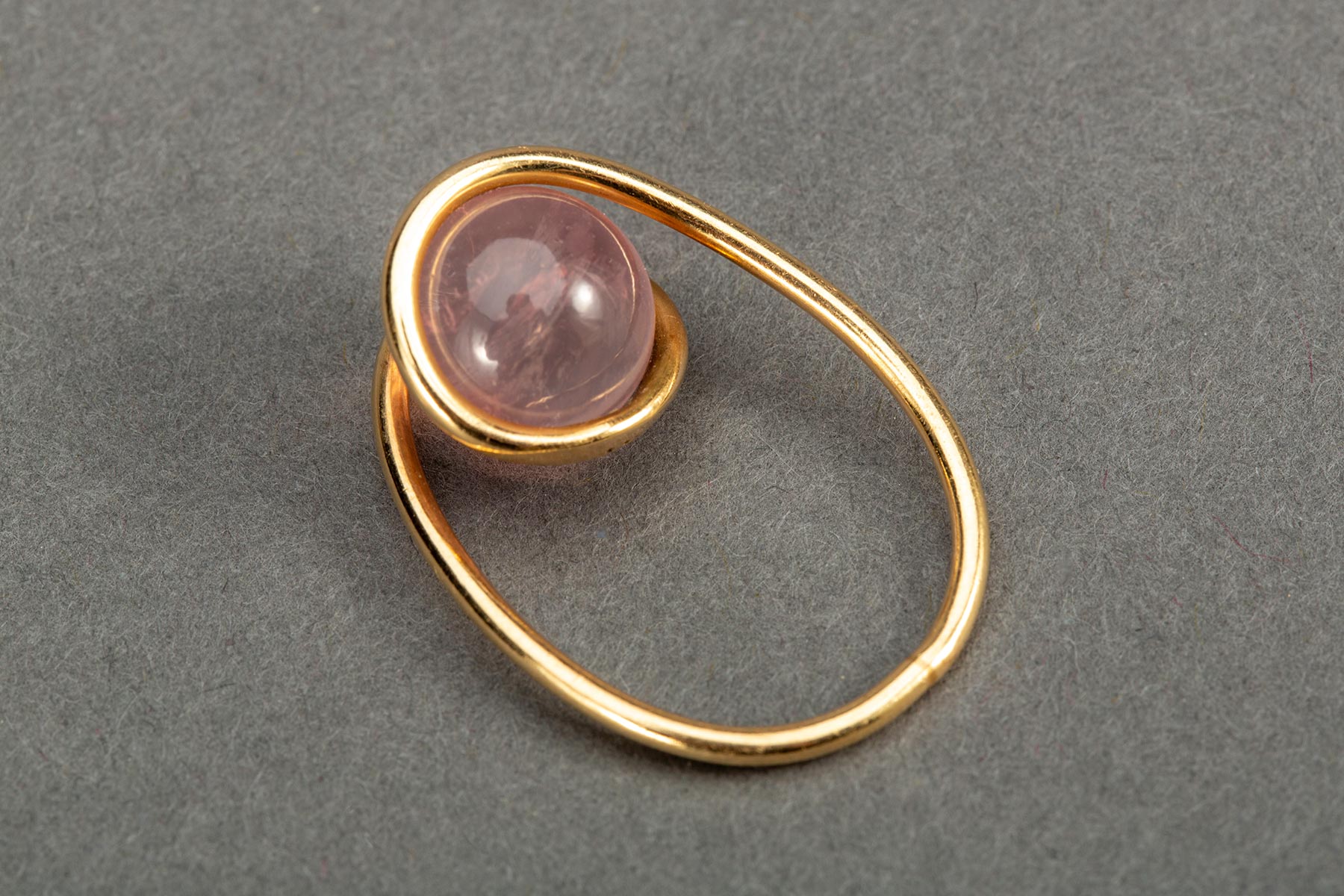
Art Smith
Purity Ring, ca. 1970
14k-gold and rose quartz, edition of 200
1 3/16 x 7/8 x 1/2 inches
Racine Art Museum, Gift of Karen Johnson Boyd
Photography: Jon Bolton
RAM Showcase: Objects
December 15, 2021 – May 28, 2022
at RAM’s Wustum Museum
The unifying theme of this exhibition is that the works presented are objects—sculptural, functional, or both—made by artists from diverse backgrounds, all residing within the United States. Subject matter varies—from material exploration to personal narrative to function. While this work is not directly issue-oriented, the fact that the makers themselves, as artists of color, have experienced a wide range of implicit and explicit biases is a subcontext worthy of consideration. Seen through that lens, the story these objects tell is even more complex.
For example, Art Smith, currently represented by two rings in RAM’s collection, was a successful jeweler in New York City during the last half of the twentieth century. Born in Cuba to Jamaican parents that migrated to Brooklyn, New York, Smith showed artistic talent early on. Unusually for the time, he was encouraged with a scholarship to Cooper Union for the Advancement of Science and Art. Eventually, Smith achieved success with bold jewelry inspired by indigenous African art forms as well as American and European modernist abstraction. His work is characterized by playful explorations of materials and curvilinear forms that emphasize the body of the wearer. Smith’s experiences were marked, however, by racism that forced him out of his first studio and encouraged his sister to say that at times he would “rage against social injustice.”
In 1990, Smith offered thoughts about how artists might address their heritage: I would say that really any artist, any craftsmen should see what they have to offer personally outside of labels, nationalistic labels, religious labels, or racial labels. There is a very good chance that as a member of a certain group you may have characteristics that may come through in the course of your work if you allow yourself to remain free and just work, rather than saying to yourself, I am black, so I’ll do black art or African art, or I’m gonna be black, and shocking and bold and primitive. Try to avoid the pitfall of labeling and see what you have and develop it. There’s nothing that says you can’t be conscious of a heritage, and call on it, but don’t let it be a restriction.
While the jewelry that Smith creates offers a narrative both independent of and enriched by his biographical details, the above information adds to his individual story as well as to the collective history of how language and social dynamics impact the creation and reception of artwork.
About RAM Showcase Exhibitions
RAM Showcase exhibitions at RAM and Wustum highlight the work of contemporary artists of color.
In this moment in time, it is critical that RAM spotlights voices that have been historically underrepresented, such as women and artists of color. Artists of color are identified in this context as non-white and non-European. This simplification, which is arguably a flawed starting point, does not account for the nuances and variations of society. It is a beginning—a way to direct those who want to educate themselves about what is possible when new perspectives are encountered.
While the work of artists of color has been and will continue to be shown in a variety of contexts at both campuses, the Showcase series highlights conversations around equity, inclusion, and social justice. This means underscoring the presence of the work of artists of color, primarily from the collection as well as, at times, featuring artists addressing critical social and cultural issues across a broad spectrum.
Further, as an educational institution rooted in the humanities and using art as a catalyst, the museum wants to encourage inquiry and exploration about the world in which we live. RAM hopes spotlighting artists of color spurs further engagement with these artists and their ideas.
RAM is committed to supporting diverse voices––whether that diversity reflects race, gender, sexuality, age, ability, social standing, or world perspective.
More About the Exhibition
Artists in the Exhibition
Mike Bird-Romero, Mary Jackson, Cliff Lee, Emma Lewis Mitchell, Gustavo Pérez, Yuka Saito, Joyce J. Scott, Art Smith, Therman Statom
RAM Showcase: Objects
December 15, 2021 – May 28, 2022
at RAM’s Wustum Museum

Art Smith
Purity Ring, ca. 1970
14k-gold and rose quartz, edition of 200
1 3/16 x 7/8 x 1/2 inches
Racine Art Museum, Gift of Karen Johnson Boyd
Photography: Jon Bolton
The unifying theme of this exhibition is that the works presented are objects—sculptural, functional, or both—made by artists from diverse backgrounds, all residing within the United States. Subject matter varies—from material exploration to personal narrative to function. While this work is not directly issue-oriented, the fact that the makers themselves, as artists of color, have experienced a wide range of implicit and explicit biases is a subcontext worthy of consideration. Seen through that lens, the story these objects tell is even more complex.
For example, Art Smith, currently represented by two rings in RAM’s collection, was a successful jeweler in New York City during the last half of the twentieth century. Born in Cuba to Jamaican parents that migrated to Brooklyn, New York, Smith showed artistic talent early on. Unusually for the time, he was encouraged with a scholarship to Cooper Union for the Advancement of Science and Art. Eventually, Smith achieved success with bold jewelry inspired by indigenous African art forms as well as American and European modernist abstraction. His work is characterized by playful explorations of materials and curvilinear forms that emphasize the body of the wearer. Smith’s experiences were marked, however, by racism that forced him out of his first studio and encouraged his sister to say that at times he would “rage against social injustice.”
In 1990, Smith offered thoughts about how artists might address their heritage: I would say that really any artist, any craftsmen should see what they have to offer personally outside of labels, nationalistic labels, religious labels, or racial labels. There is a very good chance that as a member of a certain group you may have characteristics that may come through in the course of your work if you allow yourself to remain free and just work, rather than saying to yourself, I am black, so I’ll do black art or African art, or I’m gonna be black, and shocking and bold and primitive. Try to avoid the pitfall of labeling and see what you have and develop it. There’s nothing that says you can’t be conscious of a heritage, and call on it, but don’t let it be a restriction.
While the jewelry that Smith creates offers a narrative both independent of and enriched by his biographical details, the above information adds to his individual story as well as to the collective history of how language and social dynamics impact the creation and reception of artwork.
About RAM Showcase Exhibitions
RAM Showcase exhibitions at RAM and Wustum highlight the work of contemporary artists of color.
In this moment in time, it is critical that RAM spotlights voices that have been historically underrepresented, such as women and artists of color. Artists of color are identified in this context as non-white and non-European. This simplification, which is arguably a flawed starting point, does not account for the nuances and variations of society. It is a beginning—a way to direct those who want to educate themselves about what is possible when new perspectives are encountered.
While the work of artists of color has been and will continue to be shown in a variety of contexts at both campuses, the Showcase series highlights conversations around equity, inclusion, and social justice. This means underscoring the presence of the work of artists of color, primarily from the collection as well as, at times, featuring artists addressing critical social and cultural issues across a broad spectrum.
Further, as an educational institution rooted in the humanities and using art as a catalyst, the museum wants to encourage inquiry and exploration about the world in which we live. RAM hopes spotlighting artists of color spurs further engagement with these artists and their ideas.
RAM is committed to supporting diverse voices––whether that diversity reflects race, gender, sexuality, age, ability, social standing, or world perspective.
More About the Exhibition
Artists in the Exhibition
Mike Bird-Romero, Mary Jackson, Cliff Lee, Emma Lewis Mitchell, Gustavo Pérez, Yuka Saito, Joyce J. Scott, Art Smith, Therman Statom
Sample of Work in the Exhibition
Click/tap an image for more information
Installation View
Exhibitions at RAM are made possible by:
Platinum Partners
The Estate of Karen Johnson Boyd
David Charak
Judith and David Flegel Fund
Ron and Judith Isaacs


Windgate Foundation
Diamond Partners
Ruffo Family Foundation
Ruth Foundation for the Arts
Diane Zebell
Gold Partners
Anonymous
A.C. Buhler Family
Robert E. Kohler Jr. Fund
Osborne and Scekic Family Foundation
Reliance Controls
Trio Foundation of St. Louis
W.T. Walker Group, Inc.
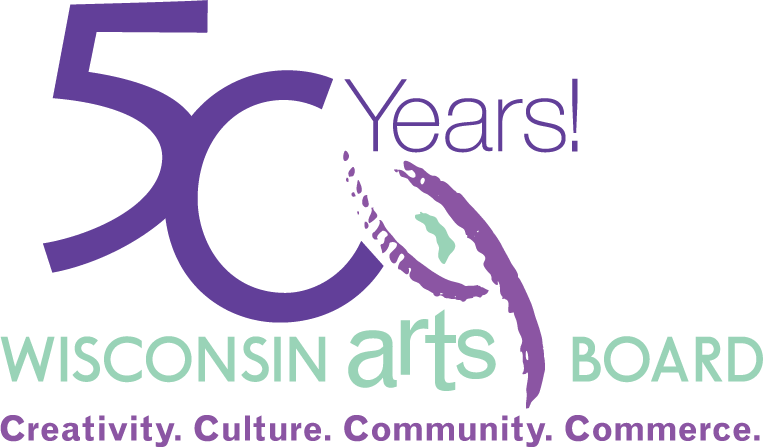
Silver Partners
Anonymous
Baird
Lucy G. Feller
Ben and Dawn Flegel
Sharon and Tom Harty
Dave and Judy Hecker
Paula Kalke
Horizon Retail Construction, Inc.
Johnson Financial Group
Lang Family Foundation
Dorothy MacVicar
Jan Serr & John Shannon
Sandra Shove
Willard and Mary Walker
Bronze Partners
Sandy and Gus Antonneau
Carol Baylon
Rose and Peter Christensen
Dave’s Wine Garage
Educators Credit Union
Patricia and Richard Ehlert
Express Employment Professionals
Deborah Ganaway
Carol Griseto
Hitter’s Baseball
Bill and Debbie Keland
Nancy and Nick Kurten
Susan Manalli
Norbell Foundation
JoAnna Poehlmann
Rasmussen Diamonds
SC Johnson
Harold and Lois Solberg
Kathy Stranghellini
Tito’s
Twin Disc
Janna Waldeck
Barbara Waldman
Marc J. Wollman
Stay in Touch
The Racine Art Museum and RAM’s Wustum Museum work together to serve as a community resource, with spaces for discovery, creation, and connection. Keep up to date on everything happening at both museum campuses—and beyond—by subscribing to our email newsletter:


